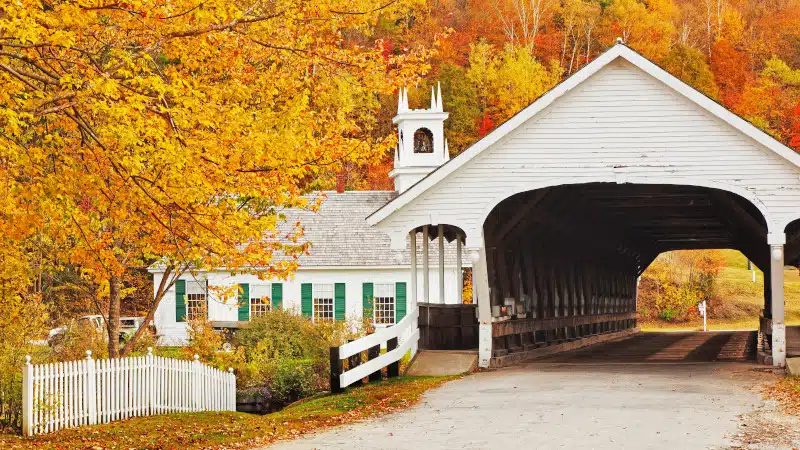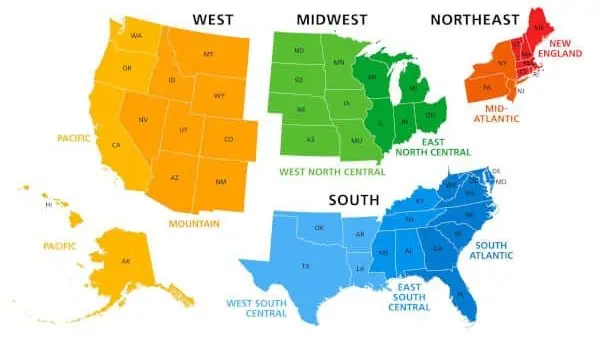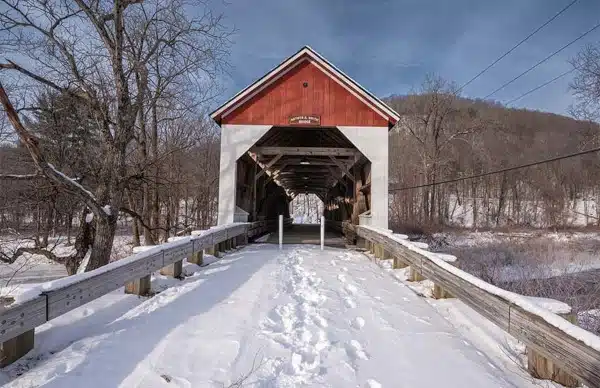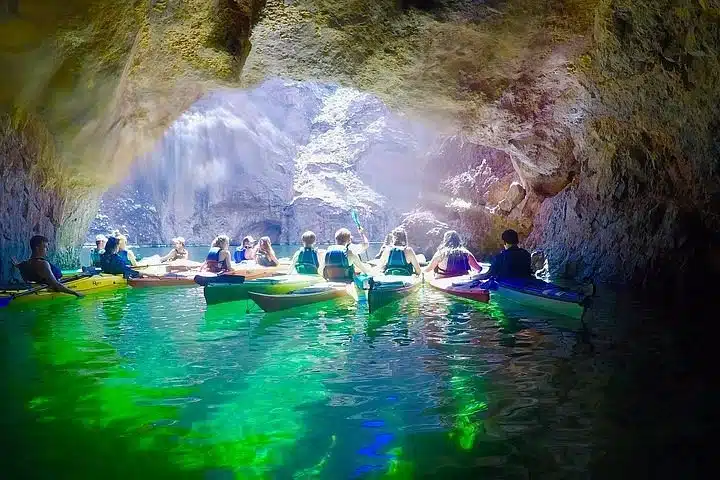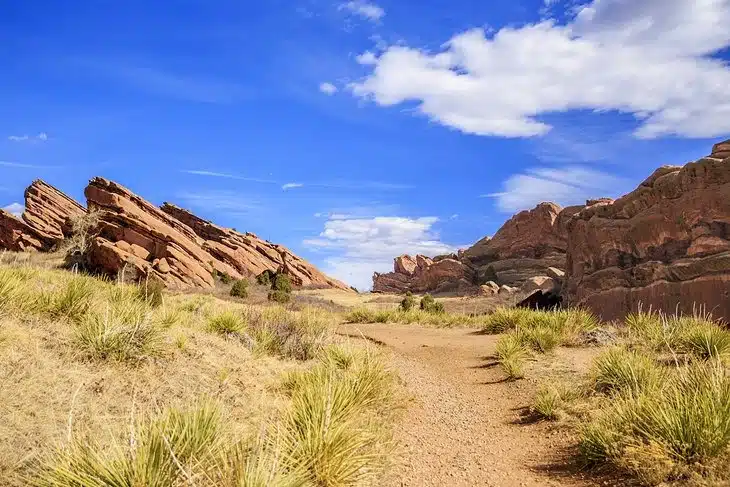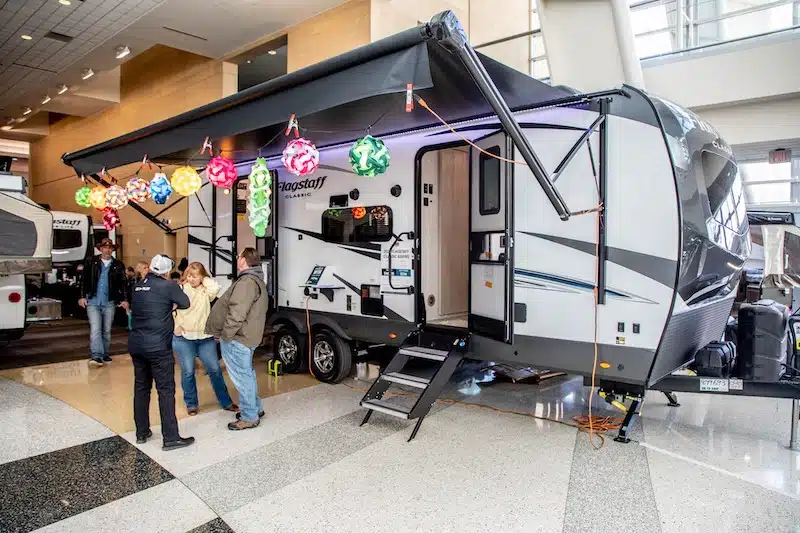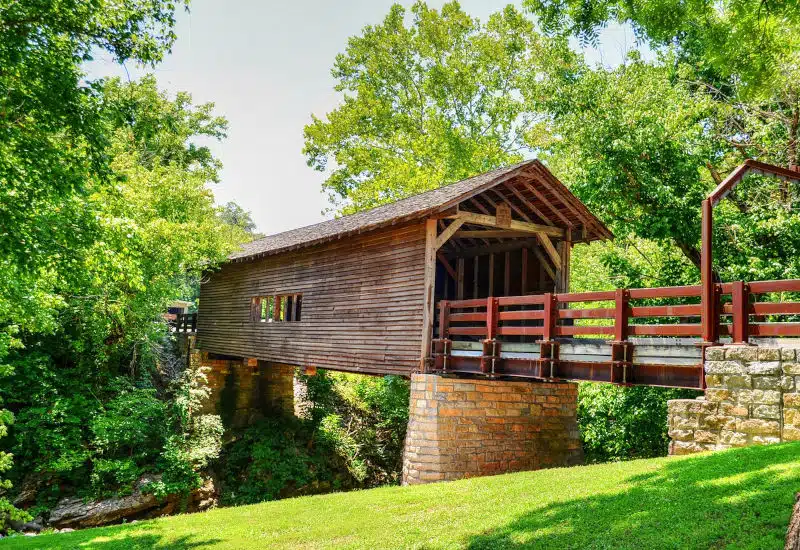From the charming South to the captivating Midwest, the enchanting Northeast, and the hidden gems of the West Coast, covered bridges are a testament to the beauty and craftsmanship of a bygone era. These historic structures not only offer a glimpse into the past, but also provide picturesque settings for leisurely walks, photography, and romantic escapes. Join us as we embark on a journey to discover some of the most beautiful “covered bridges near me” in the United States.
Covered Bridges of USA by Region and State
- Explore the most beautiful covered bridges in the South, Midwest, Northeast and West Coast of America.
- Learn about the best seasons to visit, photography tips and etiquette for visiting covered bridges.
- Find answers to common questions about these historic structures, including how many are left in the US.
This guide is part of our Covered Bridges of America series, we have broken down the bridges by region and state, click the region link below for full details and photo’s of each bridge.
- 30 Beautiful Covered Bridges in America’s Southern States
- 30 Amazing Covered Bridges in America’s Midwest
- 29 Historic Covered Bridges in America’s NorthEast
- 20 Historic Covered Bridges on America’s West Coast
Southern United States
- Clarkson-Legg Covered Bridge – Cullman, Alabama
- Horton Mill Covered Bridge – Blount County, Alabama
- Swann Covered Bridge – Blount County, Alabama
- Kymulga Covered Bridge – Childersburg, Alabama
- Easley Covered Bridge – Blount County, Alabama
- Coldwater Covered Bridge – Oxford, Alabama
- Waldo Covered Bridge – Talladega County, Alabama
- Concord Covered Bridge – Smyrna, Georgia
- Cromer’s Mill Covered Bridge – Carnesville, Georgia
- Elder Mill Covered Bridge – Watkinsville, Georgia
- Auchumpkee Creek Covered Bridge – Thomaston, Georgia
- Coheelee Creek Covered Bridge – Early County, Georgia
- Lattice Covered Bridge – Bartow County, Georgia
- Red Oak Covered Bridge – Meriwether County, Georgia
- Stovall Mill Covered Bridge – Sautee Nacoochee, Georgia
- Watson Mill Bridge – Comer, Georgia
- Bunker Hill Covered Bridge – Claremont, North Carolina
- Pisgah Covered Bridge – Randolph County, North Carolina
- Bynum Covered Bridge – Chatham County, North Carolina
- Virginia Dare Memorial Bridge – Roanoke Island, North Carolina
- Pisgah Covered Bridge – Ashboro, North Carolina
- Aiken-Rhett House Bridge – Charleston, South Carolina
- Campbell’s Covered Bridge – Landrum, South Carolina
- God’s Acre Healing Springs – Blackville, South Carolina
- Seven Mile Ford Covered Bridge – Smyth County, Virginia
- Meems Bottom Covered Bridge – Shenandoah County, Virginia
- Humpback Bridge – Covington, Virginia
- Jack’s Creek Covered Bridge – Woolwine, Virginia
- Bob White Covered Bridge – Woolwine, Virginia
- Sinking Creek Covered Bridge – Newport, Virginia
Midwest United States
- Amish Acres Historic Farm and Heritage Resort Covered Bridge – Nappanee, Indiana
- West Union Covered Bridge – Parke County, Indiana
- Houck Covered Bridge – Putnam County, Indiana
- Cedar Ford Covered Bridge – Shelby County, Indiana
- Medora Covered Bridge – Jackson County, Indiana
- Moscow Covered Bridge – Rush County, Indiana
- Smith Covered Bridge – Parke County, Indiana
- New Brownsville Covered Bridge – Bartholomew County, Indiana
- Cedar Covered Bridge – Madison County, Iowa
- Imes Covered Bridge – Madison County, Iowa
- Hogback Covered Bridge – Madison County, Iowa
- Roseman Covered Bridge – Madison County, Iowa
- Holliwell Covered Bridge – Madison County, Iowa
- Bunker Mill Bridge – Washington County, Iowa
- Ackley Covered Bridge – Greenfield Village, Dearborn, Michigan
- Ada Covered Bridge – Kent County, Michigan
- Fallasburg Covered Bridge – Kent County, Michigan
- White’s Bridge – Ionia County, Michigan
- Zehnder’s Holz Brucke (Wooden Bridge) – Frankenmuth, Michigan
- Benetka Road Covered Bridge – Ashtabula County, Ohio
- Harpersfield Covered Bridge – Ashtabula County, Ohio
- Hune Covered Bridge – Washington County, Ohio
- Johnson Road Covered Bridge – Washington County, Ohio
- Knowlton Covered Bridge – Monroe County, Ohio
- Root Road Covered Bridge – Ashtabula County, Ohio
- State Road Covered Bridge – Ashtabula County, Ohio
- West Liberty Covered Bridge – Logan County, Ohio
- Longdon L. Rector Covered Bridge – Monroe County, Illinois
- Mary’s River Covered Bridge – Chester, Illinois
- Cedar Creek Covered Bridge – Cedarburg, Wisconsin
Northeast United States
- The Hyde Hall Bridge – Glimmerglass State Park, New York
- The Perrine’s Bridge – Rifton, New York
- Salisbury Center Bridge – Herkimer County, New York
- Blenheim Covered Bridge – North Blenheim, New York
- Bull’s Bridge – Kent, Connecticut
- Comstock’s Bridge – East Hampton, Connecticut
- West Cornwall Covered Bridge – West Cornwall, Connecticut
- Academy Bridge – Bennington, Vermont
- Chiselville Bridge – Sunderland, Vermont
- Silk Road Bridge – Bennington, Vermont
- Lincoln Gap Bridge – Warren, Vermont
- Creamery Bridge – Brattleboro, Vermont
- The Cornish-Windsor Bridge – Cornish, New Hampshire & Windsor, Vermont
- Haverhill-Bath Covered Bridge – Woodsville, New Hampshire
- Blair Bridge – Campton, New Hampshire
- Squam River Bridge – Ashland, New Hampshire
- Albany Covered Bridge – Albany, New Hampshire
- Franklin Pierce Homestead – Hillsborough, New Hampshire
- Groveton Covered Bridge – Northumberland, New Hampshire
- Jackson Covered Bridge – Jackson, New Hampshire
- Pulp Mill Covered Bridge – Middlebury, Vermont
- Old Blenheim Bridge – Schoharie County, New York
- Roebling’s Delaware Aqueduct – Lackawaxen, Pennsylvania
- Pine Valley Covered Bridge – Bucks County, Pennsylvania
- Siegrist’s Mill Covered Bridge – Lancaster County, Pennsylvania
- McConnell’s Mill Covered Bridge – Lawrence County, Pennsylvania
- Ashuelot Covered Bridge – Winchester, New Hampshire
- Cornish-Windsor Covered Bridge – Cornish, New Hampshire & Windsor, Vermont
- Flume Bridge – Lincoln, New Hampshire
- Saco River Bridge – Conway, New Hampshire
West Coast of United States
- Felton Covered Bridge – Felton, California
- Honey Run Covered Bridge – Butte County, California
- Knights Ferry Covered Bridge – Stanislaus County, California
- Wawona Covered Bridge – Yosemite National Park, California
- Zane’s Ranch Covered Bridge – Humboldt County, California
- Bridgeport Covered Bridge – Nevada County, California
- Oregon City Covered Bridge – Oregon City, Oregon
- Grave Creek Covered Bridge – Sunny Valley, Oregon
- Goodpasture Covered Bridge – Vida, Oregon
- Lowell Covered Bridge – Lane County, Oregon
- Office Bridge – Westfir, Oregon
- Weddle Covered Bridge – Linn County, Oregon
- Ritner Creek Covered Bridge – Polk County, Oregon
- Antelope Creek Covered Bridge – Eagle Point, Oregon
- Horse Creek Covered Bridge – Myrtle Creek, Oregon
- Drift Creek Covered Bridge – Lincoln County, Oregon
- Sandy Creek Covered Bridge – Remote, Oregon
- Bear Creek (Neal Lane) Covered Bridge – Merlin, Oregon
- Cavitt Creek Covered Bridge – Glide, Oregon
- Dorena Covered Bridge – Cottage Grove, Oregon
Tips for Visiting Covered Bridges
Whether you’re a seasoned traveler or a first-time visitor, it’s always helpful to have some tips for exploring the beautiful covered bridges that dot our nation. In this section, we’ll provide some advice on the best seasons to visit, photography tips, and etiquette and safety guidelines to ensure that your covered bridge adventure is both enjoyable and memorable.
The best time to visit a covered bridge is typically in the spring or fall, when the weather is mild and the foliage is at its most vibrant. For photographers, the best light is usually in the early morning or late afternoon. When visiting a shop, it is worth it.
Best Seasons to Visit
The best seasons to visit covered bridges are spring, summer, and fall. During these times, the weather is typically mild, and the surrounding landscapes are at their most vibrant and picturesque. In spring, you’ll find the countryside awash with color as flowers begin to bloom, while summer offers the opportunity for leisurely walks and bike rides in the warm sunshine.
Fall brings a stunning display of foliage, providing a spectacular backdrop for your covered bridge exploration. Regardless of the season, visiting these historic structures is sure to be a memorable experience.
Photography Tips
When photographing covered bridges, consider the environment and lighting to enhance your images. The most optimal times for photography are usually early morning and late afternoon when the light is soft and warm. Experiment with different angles and perspectives to capture the essence of the bridge and its surroundings.
Try photographing from a lower viewpoint to encapsulate the magnitude and aura of these historic structures. And always remember to enjoy the process, as each bridge is unique and offers its own set of challenges and rewards.
Etiquette and Safety
When visiting covered bridges, it’s important to be respectful of the structures and their surroundings. These historic landmarks are often fragile and require care to preserve them for future generations. Be sure to follow all posted signs and local laws, and never climb on or deface the bridges.
In terms of safety, be aware of any weight or height restrictions, and exercise caution when walking or driving through the bridges. By adhering to these guidelines, you’ll ensure that your covered bridge adventure is both enjoyable and safe for everyone involved.
Frequently Asked Questions
In this section, we’ll answer some common questions about covered bridges in the United States, from their history and purpose to the best locations for exploration and photography.
Whether you’re a covered bridge enthusiast or simply curious about these historic structures, our answers to these frequently asked questions will provide valuable insights into the world of covered bridges.
Why are covered bridges covered?
Covered bridges are covered to protect the wooden structure from the elements, such as rain, snow, and sunlight. By shielding the bridge from the weather, the covering helps to extend the lifespan of the structure and ensure its continued functionality.
This practical design feature has its roots in the early days of bridge construction when builders sought to create durable, long-lasting structures that could withstand the test of time.
Number of covered bridges by state?
The number of covered bridges varies by state, with some states boasting a higher concentration of these historic structures than others. Pennsylvania, for example, holds the highest concentration of covered bridges in the country, with 219 located in 40 of its 67 counties. Vermont is home to more than 100 covered bridges, while Ohio has at least 125.
The precise number of covered bridges in each state may vary depending on factors such as preservation efforts and natural disasters, but these figures provide a general overview of the distribution of covered bridges across the United States.
What’s the purpose of covered bridges?
The primary purpose of covered bridges is to provide a secure and reliable means of crossing rivers and streams. Their covered design serves a practical purpose, as it protects the wooden structure from the elements, such as rain, snow, and sunlight. This helps to extend the lifespan of the bridge, ensuring its structural integrity and continued functionality.
In addition to their practical purpose, covered bridges also hold historical and aesthetic value, as they offer a glimpse into the past and serve as a testament to the skill and craftsmanship of the builders who created them.
Where are the most covered bridges?
The majority of covered bridges in the United States can be found in the northeastern states of Pennsylvania, Ohio, Vermont, Indiana, New Hampshire, and Oregon. These states are home to some of the most renowned and picturesque covered bridges, making them popular destinations for tourists and covered bridge enthusiasts alike.
Whether you’re looking to explore the historic passageways of Pennsylvania, the scenic spans of Vermont, or the rustic crossings of Indiana, you’re sure to find a wealth of beautiful covered bridges to discover and enjoy.
How many covered bridges in Ashtabula county?
Ashtabula County, Ohio, is home to 19 covered bridges, including the Smolen Gulf Bridge, the longest covered bridge in the United States. This northeastern Ohio county is a popular destination for covered bridge enthusiasts, and each year, the Ashtabula County Covered Bridge Festival celebrates the region’s rich history and these architectural marvels.
From the unique lattice design of the Benetka Road Covered Bridge to the picturesque setting of the Harpersfield Covered Bridge, Ashtabula County offers a diverse array of covered bridges to explore and admire.
How many covered bridges in Maine?
Maine is home to nine covered bridges, each with its own unique history and charm. While the number of covered bridges in Maine may be fewer than in some other states, these structures still offer a fascinating glimpse into the past and provide picturesque settings for photography and leisurely walks.
As you explore the covered bridges of Maine, be sure to take the time to appreciate their history, architectural beauty, and the natural surroundings that make them such a beloved part of the state’s landscape.
How many covered bridges are left in the united states?
While the exact number of covered bridges remaining in the United States may vary due to factors such as preservation efforts, natural disasters, and new construction, it is estimated that there are currently around 1,500 covered bridges still standing. These historic structures can be found in states across the country, with the greatest concentrations in the northeastern states of Pennsylvania, Ohio, Vermont, Indiana, New Hampshire, and Oregon.
As you explore these beautiful bridges, you’ll be immersed in the rich history and architectural beauty that make them such a cherished part of America’s heritage.
How many covered bridges are there in Oregon?
Oregon is home to 51 covered bridges, many of which are located in the majestic timber arches region. These beautiful structures include the Crooked River Bridge, the Deschutes River Bridge, the Rogue River Bridge, the Applegate River Bridge, and the Umpqua River Bridge.
Each of these bridges offers a unique glimpse into the state’s rich history and architectural beauty, making them a popular destination for tourists and covered bridge enthusiasts alike.
Whether you’re exploring the lush forests of Oregon or simply taking a scenic drive through the countryside, be sure to include these stunning covered bridges on your list of must-see attractions.
How many covered bridges are there in Ohio?
Ohio is home to at least 125 covered bridges, many of which are located in the scenic spans region. These picturesque bridges include the Smolen Gulf Bridge, the Harpersfield Covered Bridge, the Bridge of Dreams, the State Road Covered Bridge, and many others.
As you explore the beautiful covered bridges of Ohio, you’ll be captivated by their charm, history, and the breathtaking landscapes that surround them. Whether you’re taking a leisurely drive through the countryside or planning a weekend getaway, Ohio’s covered bridges offer a unique and unforgettable experience.
Are there covered bridges in KY?
Yes, there are eleven covered bridges in Kentucky which can be visited and enjoyed. These bridges have been carefully preserved, maintaining a connection to the state’s unique cultural heritage.
How many covered bridges are in Delaware?
According to the most commonly accepted list, there are three authentic covered bridges in Delaware. Two of these are historic sites with a long-standing tradition in the state’s history.
How many covered bridges are left in Maine?
Nine covered bridges still stand in Maine today, providing a glimpse into the state’s past. These bridges span across rivers and creeks in beautiful locations such as the Lakes and Mountains region, offering locals and visitors alike a unique experience.
What’s the big deal about covered bridges?
Covered bridges are renowned for their beauty and longevity. Their unique roofs protect the structural components from harsh weather conditions, thereby lengthening their lifespan substantially. Consequently, they are a remarkable reminder of America’s history and culture.
Moreover, they continue to provide a valuable service to those traveling on them today.
What states still have covered bridges?
Thanks to the efforts of preservationists, hundreds of covered bridges still dot America’s countryside. Pennsylvania, Ohio, Vermont, Indiana, New Hampshire, and Oregon have some of the highest concentrations of these historic structures.
Wrapping it Up
From the charming South to the captivating Midwest, the enchanting Northeast, and the hidden gems of the West Coast, covered bridges offer a unique and unforgettable journey into America’s history and architectural beauty. These historic structures not only serve as a testament to the skill and craftsmanship of the builders who created them, but also provide picturesque settings for leisurely walks, photography, and romantic escapes. As you embark on your own covered bridge adventure, remember to appreciate the history, architectural beauty, and natural surroundings that make these bridges such a cherished part of our nation’s heritage. Happy exploring!

